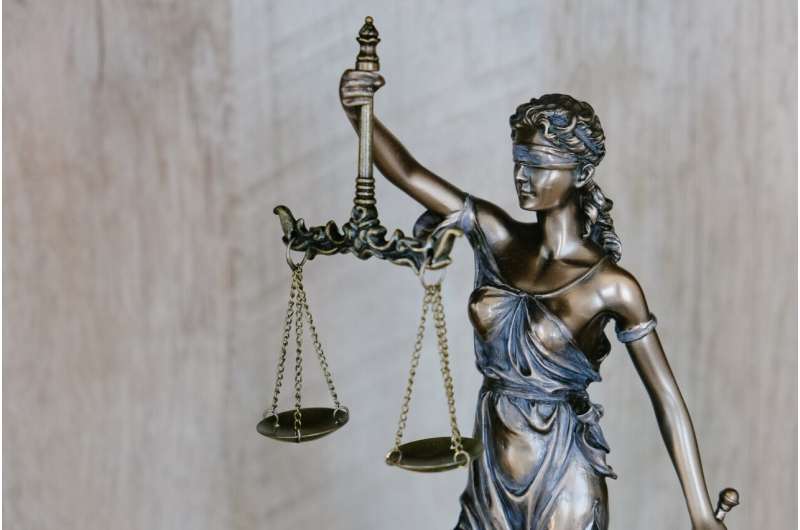Laws are introduced globally to reduce 'psychological harm' online, but there's no clear definition of what it is

Gaby Clark
scientific editor

Andrew Zinin
lead editor

Several pieces of legislation across the world are coming into effect this year to tackle harms experienced online, such as the and Australia's . There are also new , , and related to digital products (including smart devices such as voice assistants, virtual headsets) and services such as social media platforms.
Of the many harms these types of legislation are designed to address, "psychological harm," "mental distress" or similar terms are commonly included.
Unfortunately, when psychological harm and the like are referred to, there is typically . But while we might have an intuitive understanding of what psychological harm is, . This means evidencing what it is, and .
How do we do this? An obvious place to look .
The origin story
The earliest reference to psychological harm . Back then, it was about the destabilizing impact of war propaganda and the use of psychology to subvert people's understanding of reality. Psychological harm , which also applied to those witnessing the horrors of war on the front line.
In the and , psychological harm was more associated with advertising tactics that aggressively exploit people's emotions and insecurities.
Fast forward to the early 2000s, and tools for assessing emerged alongside clinical assessments of mental health disorders. For instance, research on , such as and , documented several psychological impacts. These ranged from withdrawal from social groups, self-doubt and reduced self-esteem to mental health disorders such as depression, anxiety and PTSD.
More terms entered into clinical and forensic lexicons, such as , and . All of them concern some form of mental adverse experience which may happen immediately or as a delayed reaction to traumatic events.
Where we are now
In reviewing the 80 years' worth of work in clinical, forensic and cognitive psychology, as the major issues concerning psychological harm.
There is no agreement as to where to draw the boundary between psychological harm or related concepts and mental disorders outlined in the diagnostic manual called (such as depression, anxiety or personality disorders).
There is also of psychological harm or psychological distress or damage. For instance, if we just take social media, there are different metrics that vary even on how they measure negative mental experiences on , and , , and .
Why does this matter? Take for example . There are . And because the tools don't all align, we don't have an of psychological harm. Some tools are too narrow in scope—they fail to include severe cases that require psychiatric treatment. And other assessments are too broad— those that are .
What's more, how we perceive and experience adverse events, which can be very serious and debilitating, . Research in clinical and forensic psychological recognizes this. These disciplines have spent time establishing standards of assessment when supporting legal decisions when we face terrible situations.
Three practical suggestions
For legislation to do the job of guarding against psychological harm from serious adverse experiences online and through digital technologies,
The first thing is to have an agreed definition. For example, in 2025, the psychologist proposed a viable general-purpose definition as "a sustained drop in stable functioning, negatively impacting well-being."
This works in the same way as legal requirements for defining physical harm, which needs a baseline of functioning to show how an injurious event causes a change to it. The severity of the damage varies, based on, say the length of recovery (such as a week, a month, a year, never). In the same way, the length of recovery from exposure to illegal content online would indicate the severity of the psychological harm experienced.
Second, there should to be a process for demonstrating causality between a particular adverse event online and the harm itself. So far, there doesn't appear to be any set criteria laid out in online safety or harm acts for establishing causality.
Again, legislators could learn from forensic research, which outlines that establish causality—psychologically and legally. Forensic psychologists weigh the evidence for the relative ratio of pre-existing and event or post-event factors to determine causality using something called .
For example, sometimes people have pre-existing injuries, vulnerabilities, or psychopathologies. So, in such cases, there needs to be a baseline, where the evidence shows how an individual's conditions have been exacerbated by experiencing an injurious event. For example, if we applied this analysis to psychological harm experienced online, it would work like this. Forensic psychologists would weight the evidence to determine that, in the absence of seeing the illegal content, an individual would not have experienced PTSD to the same extent that they are experiencing it currently.
Finally, there need to be standards for the evidence used to show causality between a particular adverse event online and the harm itself, which we don't yet see in current online safety or harm acts.
In , on the other hand, the , requiring independent corroboration of psychological impacts. This is where psychiatric assessment tools of PTSD, depression and anxiety are used along with other sources of evidence. ������Ƶical outcomes (such as neurological damage) and behavioral outcomes (such as substance abuse, self-harm) are also required.
To serve the public, the law needs to improve. This can't be achieved without a fleshed out definition of psychological harm, tools of assessment and a framework that traces a causal path from the injurious content to the harm it is considered to have caused.
Provided by The Conversation
This article is republished from under a Creative Commons license. Read the .![]()















